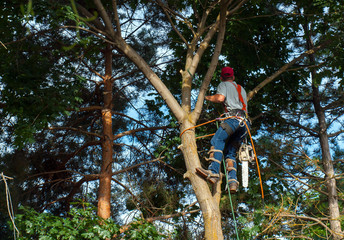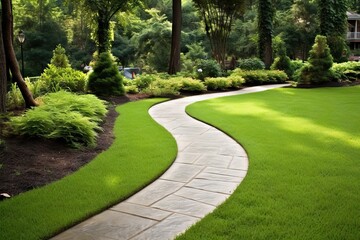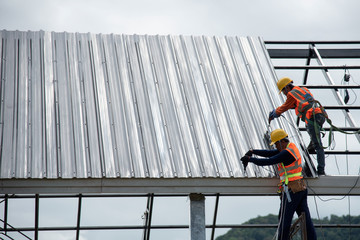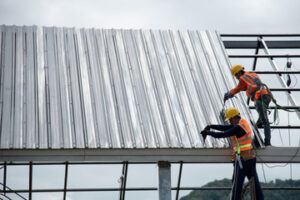Tree service encompasses a wide variety of tasks that help trees stay healthy and attractive. Typically performed by professional arborists, these services include: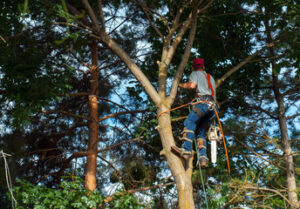
A well-trained arborist is well-versed in sustainable techniques that preserve both the ecosystem of your landscape and its trees. These practices minimize damage, promote growth and health, and enhance the beauty of your property. Visit Website to learn more.
One of the most important factors in tree care is safety. Arborists put themselves in harm’s way on a daily basis to ensure the health and beauty of trees, and proper safety measures are essential to prevent injuries.
Before a job begins, a Quality Team Worker (QTW) will perform a thorough inspection of the tree and its surroundings. This will include assessing the condition of the trunk, limbs, and roots. They will also examine the surrounding area for any potential hazards, such as power lines or structures. The QTW will determine the best way to enter the tree and create a plan for the job.
This includes a detailed estimate for the entire project. Having this information allows you to make an informed decision and avoid surprises when the bill comes in. The best arborists will explain their estimates in detail to give you a clear understanding of what’s included and what isn’t.
Once the work is underway, all workers should wear personal protective equipment. This includes helmets that protect against impact, penetration, and electricity. They should also be trained in the safe operation of all equipment that will be used, and they should know how to use it properly. It’s also necessary to clear the area around the tree, removing any obstacles or outdoor furniture. Lastly, they will prepare the tree for a controlled fall. They will cut a notch into the desired falling side, insert a wedge on the desire side, and then place a rope to guide it to the ground.
While working, it’s important to have a designated watcher to look out for kickback limbs and other potential hazards. A watcher should be several feet behind the worker to alert them of any potential problems. They should also be able to spot signs of wear on the chainsaw and stop the worker from getting hurt.
It’s also crucial to set up a work zone at any site near the road, with cones, barriers, and flaggers. This will help keep traffic flowing without interruption while keeping the tree service crew safe.
Aesthetics
Trees add visual appeal and value to landscapes, but they also play a significant role in climate control, erosion control, and other environmental benefits. They can even raise property values by as much as 15%, according to research. But maintaining the beauty of a landscape requires year-round maintenance, and that’s where Tree Service comes in. From pruning to trimming, tree service providers provide both health and aesthetic measures that protect trees and enhance the property’s overall appearance.
Aesthetics measures include thinning, which removes select branches and leaves to improve light penetration in the canopy of your trees, as well as pruning and shaping, which gives trees a natural shape that complements the surrounding landscape. Tree services can also plant and remove dead trees, improve soil nutrition, and treat or prevent tree diseases. These practices help protect the safety of your family, friends, and visitors and ensure that your trees continue to flourish for years to come.
Customers often appreciate that Tree Service is equipped with professional-grade equipment and adheres to strict safety standards, reducing the risk of injury and damage to property during the tree care process. They also enjoy the peace of mind that comes with knowing that their trees are in the hands of trained professionals who understand how to best care for different types of trees.
In terms of aesthetics, customers often report that they value a tree service provider who is responsive and communicates clearly throughout the project. They also like when a company is able to complete projects quickly and efficiently, without sacrificing quality.
A recent study suggests that forest health characteristics—such as stand density and tree health measures—are more than just a proxy for aesthetics. These features can actually boost property value by up to 20%, especially on urban-wildland interface properties. This is due to their direct impact on fire risk, which translates into decreased insurance costs and improved community livability.
Environmental Sustainability
Trees have a significant ecological impact, supporting habitat conservation and providing environmental benefits like carbon sequestration. In urban areas, trees mitigate the urban heat island effect and lower energy consumption through natural cooling. They also help reduce erosion and provide soil stability, and they host numerous wildlife species. Trees can even increase property values and enhance the overall appeal of a landscape. As such, it’s crucial that tree services consider the long-term environmental impacts of their work and implement eco-friendly practices, including reforestation initiatives, proper disposal of wood debris, and utilizing low-impact machinery.
Using a combination of biological, mechanical, and cultural methods to manage pests instead of relying solely on harmful chemical solutions is another key element of sustainable tree care. For instance, using bird feeders to control aphid populations can be a cost-effective, environmentally friendly, and highly effective solution. In addition, mulching to retain moisture and promote nutrient retention can reduce the need for watering and protect soil health.
In addition to implementing environmentally friendly practices, Tree Service can use alternative energy sources for equipment, such as battery-operated tools or solar and wind power. This helps to reduce emissions, contributes to a cleaner environment, and supports local green jobs. Regular environmental monitoring can assess the state of a landscape’s ecosystem and detect any unforeseen negative effects from the tree service’s activities, such as groundwater contamination and erosion.
When a tree is under threat of removal, a thorough assessment must be conducted to determine if it poses safety risks or if it can be saved through other methods such as pruning or cabling. Pruning is a safe and effective way to improve a tree’s structure, while cabling and bracing can support weak branches or trunks, allowing older trees to be saved and extending their lifespan.
As climate patterns change and extreme weather becomes more common, it’s critical that we preserve and care for our urban forests. Trees help absorb floodwaters, block high winds, and lower air temperatures, decreasing the need for artificial cooling and lowering energy costs. They also reduce noise pollution and make urban spaces more livable by absorbing sound and reducing dust and dust.
Health
Trees have a positive impact on the environment, but their health is dependent on many factors. They require a lot of nutrients to maintain proper balance. This can be accomplished with the use of fertilizers, which help to improve root systems and support new growth. The tree service team will also take into consideration the soil conditions and the tree’s environment, as well as its age, species, and overall condition when determining the best course of action for continued health.
In addition to preventive measures, tree services can also provide treatment options for trees that are suffering from pests or diseases. These treatments will keep the problem from escalating and can save the life of a tree that would otherwise be lost without intervention. The experts in this field know the most effective ways to treat the issue and how to do so safely.
Homeowners are increasingly interested in taking advantage of the benefits that tree services offer to their properties. This is in part due to climate change, as storms and other natural disasters have become more frequent and severe. Many homeowners also want to reduce their carbon footprint by preserving the beauty and functionality of existing landscapes.
The team of experienced professionals understand the value of maintaining healthy trees and how that translates to a beautiful, vibrant property. The team uses the latest equipment and technology to streamline processes, leading to reduced operational costs for clients. Modern scheduling software and communication platforms also allow them to better address client fluctuations in income, which is crucial for customer satisfaction and retention.
